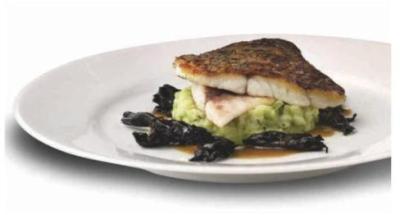Flavor and Ingredient Trends for the New Year
We can celebrate … and prognosticate. The Mayan cal- endar appears to be wrong, so it seems we can safely forecast the trendy flavors, fashionable functional foods and hot ingredients that will dominate 2013. And, barring galactic recalculation, we can even act on some of them. Any serious prediction of 2013’s food and ingredient trends has to acknowledge the 900-lb. gorilla in the room (even he’s put on weight). We still suffer from an epidemic of obesity that continues to grow and place an increasing health care burden on the economy.
Even the most conservative forecast has the nation’s obesity (a body mass index greater than 30) rate hitting 42 percent of all adults by 2030, with a “severe obesity” rate of 11 percent, according to a study published last summer in The American Journal of Preventive Medicine. Paralleling the surge in obesity is the rise in type 2 diabetes, projected to afflict one in three Americans by 2050, according to the Centers for Disease Control. Obesity and type 2 diabetes are by no means the only health problems in the modern world, but they have extensive tentacles and are the best evidence of a modern diet gone awry. Another factor shaping the upcoming trends is the fact that the population is aging. By 2040, one in five Americans will be age 65 or older, up from about one in eight in 2000. Baby boomers are now Medicare and Social Security age, but are not ready to be put out to pasture. They are looking to stay active and engaged and are willing to try products that they feel will help them do so.
If you add to the above concerns over global matters, specifically sustainability, it becomes apparent that food trends increasingly are not merely a matter of whim or fashion.
 It’s tasty, trendy and ecological: topping the entree is barramundi, farming of which does not spoil the water table or allow waste to es- cape into streams but the fish is sustainable.
It’s tasty, trendy and ecological: topping the entree is barramundi, farming of which does not spoil the water table or allow waste to es- cape into streams but the fish is sustainable.
The uplifting news is that food and beverage processors, in tandem with ingredient developers and suppliers, have been achieving remarkable success in applying the technology for creating products to help address the obesity and diabetes issues in con- formity with that perennial trend of, “If it has no flavor, consumers will not accept it no matter how ‘good for you’ it is.
Something natural Converting many more ingredients to natural forms will be a trend in the new year, according to Rodger Jonas, director of national sales for PL Thomas & Co. (www.plthomas.com), Morristown, N.J. “Now that [more] natural forms exist for color, with greater stability, the trend to- ward change is becoming dramatic. We’re finding non-GMO and aller- gen-free ingredients all are on the rise.
“For example, greater than 85 percent of American consumers know what lycopene is and it has a ‘feel-good’ representation on product labels,” he continues. “It is now a good, naturally derived color ingredient as well.” “The growth in demand for naturally derived food coloring in the U.S. continues to outpace certified synthetic/FD&C color ad- ditives,” agrees Campbell Barnum, vice president of branding and market development for D.D. Williamson Inc. (www.ddwilliamson. com), Louisville, Ky. “The warning label required for the ‘South- ampton Six’ food colors in the EU has resulted in a de-facto ban on equivalents to Red 40, Yellow 5 and 6.”
The “Southampton Six” are the six colors that a 2007 British study connected to hyperactivity in children. They include Alurra Red (also called Red 40), Ponceau 4R (E124), Tartrazine (Yellow 5) (E102), Sun- set Yellow FCF/Orange Yellow S (Yellow 6) (E110), Quinoline Yellow (E104) and Carmoisine (E102).
“Media stories on food color additives have boosted consumer aware- ness and influenced the increase in new products developed in the U.S. without FD&Cs,” says Barnum. “Food product developers will be in- creasing the number of formulations made with [natural] coloring alter- natives – carotenoids, anthocyanins, turmeric and other sources.”
Barnum also notes that in recent months, red has replaced yellow as the top color in soft drink launches. In beverages as well as packag- ing, he predicts peach will be a popular hue for product launches in the second half of 2013. Body, mind and heart “One of the areas we see continuing to grow is cognitive function and brain health,” says Barbara Davis, PL Thomas’ director of medi- cal and scientific affairs. “This not only includes the ability to retain mental sharpness by the aging population, but also ‘mental energy’ from younger consumers. Complementary to this is an interest in mood enhancement and the ability to manage stress.” In response, P.L. Thomas launched its cognitive support ingredient, Zembrin, last fall. “This ‘experiential’ ingredient – you can feel that it works – has GRAS status and is backed by clinical data supporting its safety and efficacy for stress-relief and enhanced cognition,” Davis adds.
Where obesity is concerned, we’ll see the rise of increasingly tar-geted products. Weight-management ingredients from carbohydrate sources, ranging from gums and fibers such as polydextrose, resistant starch and inulin/oliggosaccharides will lend satiety. And sweeteners such as stevia and monk fruit (luo han guo) will reduce the calories. Glucose control also will be prominent. A major area for improvementis consumer awareness and education of what these targeted ingredients